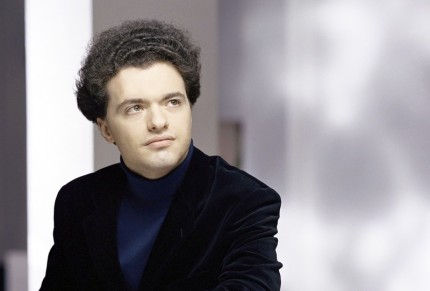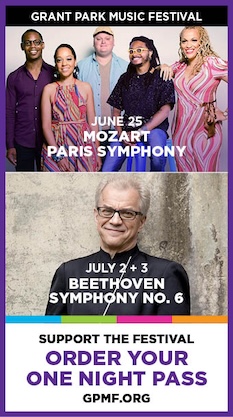Final Beethoven sonata forms centerpiece of memorable Kissin recital
It was piano Nirvana over the weekend with Symphony Center playing host to two powerhouse pianists, Maurizio Pollini playing Mozart with Riccardo Muti and the Chicago Symphony Orchestra and Evgeny Kissin giving a Sunday afternoon piano recital.
Kissin’s recitals are always eagerly anticipated events attracting sell-out audiences spilling over onto the stage, but this program had greater anticipation than usual given that Kissin was traversing Beethoven’s final Piano Sonata No. 32 in c minor, Op. 111, Beethoven’s culminating statement in that genre.
As a set-up for that performance, Kissin played a late Haydn Piano Sonata in E-flat Major, H. XVI:49 that spotlighted vintage Viennese Classicism to offer a broader sense of what Beethoven was transforming.
But this was late Haydn, after all, which Kissin made a convincing case as pointing the way for the new directions that Beethoven would take. Hence, there were dramatic starts and stops and a sense of what was to come despite Kissin never losing a light and lively touch.
Particularly illuminating was the middle movement, which was kept poignant but not overly slow, and singing all the way as Haydn indicates. The finale revealed great clarity and stylistic integrity yet remained rhythmic and personally expressive.
Closing the first half of the program, Kissin’s take on Beethoven’s Op. 111 became a tour de force in Classicism so expansive as to have morphed into early Romanticism, the period most associated with the pianist’s core repertoire.
The opening revealed a wonderful range of dynamic nuance from grandiose to an immediate pullback that emphasized foreboding. Dissonance and consonance were unleashed with Kissin emphasizing ambiguity before breaking forth into freedom.
Like the Haydn Adagio, the aria of the Beethoven Adagio began refreshingly faster than usual, remaining solemn but not stodgy. The variations that followed were extraordinarily lively with an immense emphasis on rhythm.
Kissin’s syncopation was almost jazz-like in its freedom, but this would not be to everyone’s taste. The overall effect was almost manic, a vacillating between playfulness and profundity that offered a refreshing and vibrant take on this music that was receptively greeted with a poignant silence before becoming a standing ovation.
In a very real sense, everything that followed was a series of encores, albeit a long string of them.
Kissin played four Schubert Impromptus, the first of which (D. 935, No. 1) competed with a piercing cell phone coming from on stage, of all places. Whoever possessed the phone was apparently too mortified to drag it out to turn it off, so the rings garnered more attention with each repeat. Kissin’s shoulders tightened with each ring but he never lost his composure.
D. 899, No. 4 in A-flat Major was the most dynamically expansive of the set, building to a climax that served as an effective conclusion to by and large tranquil performances.
Dessert came in the form of Liszt’s Hungarian Rhapsody No. 12 in c-sharp minor, which brought into the spotlight the pyrotechnical pianism Kissin is so known and adored for.
The capacity crowd went ballistic and was favored with four encores: the Sgambati transcription of “Dance of the Blessed Spirits” from Gluck’s Orfeo ed Euridice, Liszt’s Etude in f minor, No. 10, the Liszt transcription of Schubert’s The Trout and the Chopin Prelude in d minor, Op. 28, No. 24, all tossed off with poetry and swagger.
Posted in Performances


